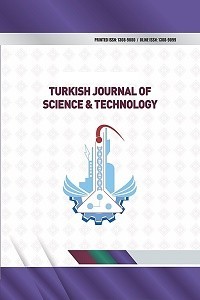The Effect of The Number of Reference Points and Distribution on Coordinate Transformation in Underground Mining Measurements
Laser Scanner, Point Cloud, 3D Transformation, Geodetic Coordinate
The Effect of The Number of Reference Points and Distribution on Coordinate Transformation in Underground Mining Measurements
Laser Scanner, Point Cloud, 3D Transformation, Geodetic Coordinate,
___
- Schmitz B, Holst C, Medic T, Lichti DD, Kuhlmann H. How to Efficiently Determine the Range Precision of 3D Terrestrial Laser Scanners. Sensors 2019; 19, 1466.
- Dumalski A. Evaluation of the possible application of terrestrial laser scanner-scanstation in vertical displacement measurements. Technical Sciences/University of Warmia and Mazury in Olsztyn, 2011; 33-43.
- Yıldız F, Altuntaş C. Yersel Lazer Tarayıcı Nokta Bulutlarının Jeodezik Koordinat Sistemine Dönüştürülmesi, Harita Dergisi 2009; Sayı:142.
- Yue D, Wang J, Zhou J, Chen X, Ren H. Monitoring slope deformation using a 3-D laser image scanning system: a case study. Min Sci Technol (China) 2010; 20(6), 898-903.
- El-Tokhey M, Abdel-Gawad AK, M Yasser, El-Maghraby AM. Accuracy assessment of laser scanner in measuring and monitoring deformations of structures 2012; 26. 144-151.
- Gonzalez H, Solla M, Armesto J, Arias P, Range, Close & Sensing, Remote & Group, Photogrammetry. Novel method to determine laser scanner accuracy for applications in civil engineering. Optica Applicata 2012; 42.
- Altuntaş C. Yersel Lazer Tarayıcı Nokta Bulutlarının Birleştirilmesi ve Jeodezik Koordinat Sistemine Dönüştürülmesi: Literatür Araştırması, Selçuk-Teknik Dergisi 2017; Cilt:16, Sayı:1-2017, Konya.
- Scaioni M, Forlani G. Independent model triangulations of terrestrial laser scanner data, In proc. of Vision Techniques for Digital Architectural and Archaeological Archives, Portonovo - Ancona , Italy, ISPRS Archives 2003; Vol.XXXIV-5/W12, 308-313.
- Elkharachy I, Neimeier W. Optimization and strength aspects for georeferencing data with terrestrial laser scanner systems, 3D IAG712th FIG symposium, Baden, Austria,2006; p.10 pages, May 22-24.
- Zeybek M. El-tipi LiDAR ölçme sistemleri ve 3B veri işleme. Türkiye Lidar Dergisi 2019; 1(1), 10-15.
- ISSN: 1308-9080
- Başlangıç: 2009
- Yayıncı: Fırat Üniversitesi
Optimization Studies on the Changeable Components of Hydroelectric Power Plants
M. Cihat TUNA, Alp Buğra AYDIN
BP19: Tek Boyutlu İkili Modele Dayalı Doğru Bir Sesli Şiddet Tespit Modeli
Arif Metehan YILDIZ, Tuğçe KELEŞ, Kübra YILDIRIM, Sengul DOGAN, Türker TUNCER
A Hierarchical Reinforcement Learning Framework for UAV Path Planning in Tactical Environments
Deep Transfer Learning-Based Broken Rotor Fault Diagnosis For Induction Motors
Fırat DİŞLİ, Mehmet GEDİKPINAR, Abdulkadir SENGUR
Berivan ÖZAYDIN, Ramazan TEKİN
Levent TASCI, Hacı Sait ARSLAN
Feyza ALTUNBEY ÖZBAY, Erdal ÖZBAY
Analysis of Views on Digitalization of Design Studios
Nihal Arda AKYILDIZ, Betül BEKTAŞ EKİCİ, Songül KARABATAK, Müslim ALANOĞLU
Molecular Docking Study on Interaction of Polyvinyl Alcohol (PVA) with Group IA Bacteriocin
